Baker to Vegas: Leveraging Pulsara to Manage a Planned Event
Although they have the advantage of prior awareness and preparation, large-scale planned events pose unique challenges for emergency management...
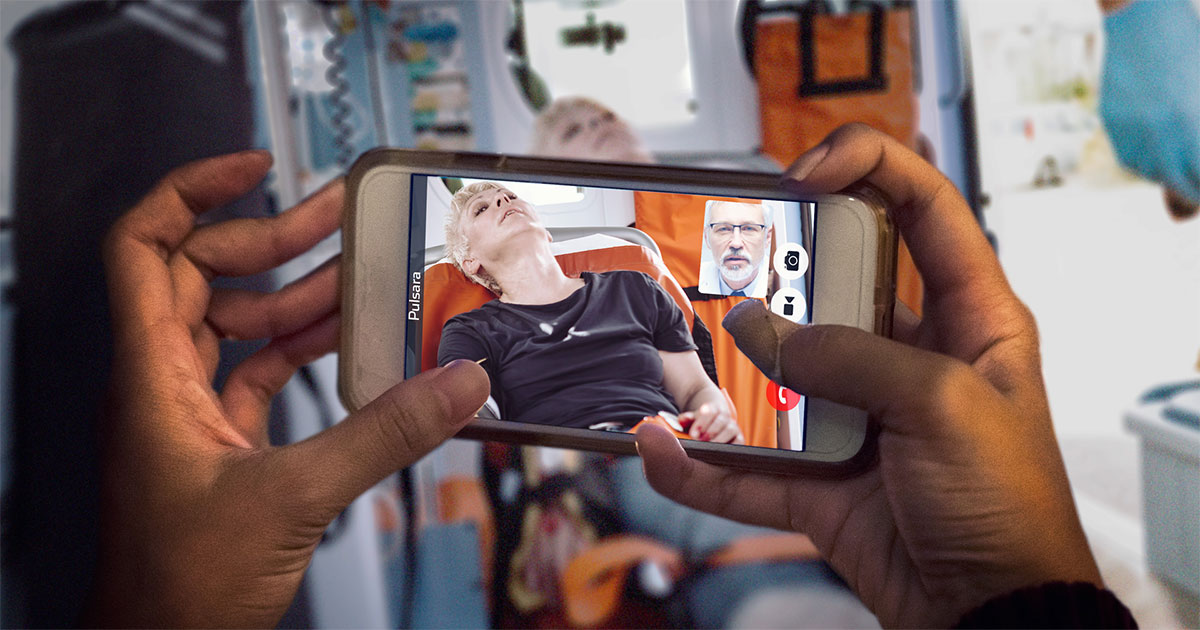
EDITOR'S NOTE: This article originally appeared on EMS1.com. Special thanks to our guest author, Sarah Calams of EMS1 BrandFocus.
__
In light of the COVID-19 pandemic, healthcare and EMS providers have found themselves relying on technology more than ever before.
For instance, telehealth has been able to simplify and accelerate patient care via telecommunication technologies. This capability not only allows providers to reduce their exposure and preserve PPE, but also leads to better, more informed treatment decisions.
Seema Verma, an administrator for the Centers for Medicare and Medicaid Services, spoke earlier this year about the use of telehealth in response to COVID-19.
“I think the genie’s out of the bottle on this one,” Verma said. “I think it’s fair to say that the advent of telehealth has been just completely accelerated, that it’s taken this crisis to push us to a new frontier, but there’s absolutely no going back.”
To better understand how telehealth applications can help expand the reach of out-of-hospital care to save more lives, here are 10 things every EMS provider needs to know about telehealth.
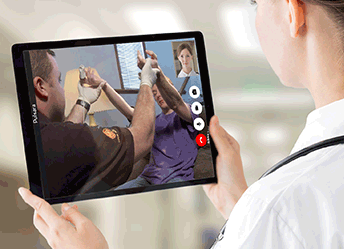 According to the American Telemedicine Association, telemedicine is the “use of medical information exchanged from one site to another via electronic communications to improve a patient’s clinical health status.”
According to the American Telemedicine Association, telemedicine is the “use of medical information exchanged from one site to another via electronic communications to improve a patient’s clinical health status.”
Meanwhile, the Agency for Healthcare Research and Quality defines telehealth as the “use of telecommunication technologies to deliver health-related services and information that supports patient care, administrative activities and health education.”
In EMS, utilizing telemedicine technology typically translates to having a large, standalone piece of equipment with a video camera and other related items in one area of the ambulance. However, telemedicine can also be done via a patient’s hospital room.
“The example would be stroke telemedicine, where we roll the carts with video and stuff into the patient’s room, because we’re a rural hospital, and then you have the specialist, the neurologist, who’s in a larger hospital, helping with the neuro exam,” said Kris Kaull, chief marketing officer at Pulsara, a healthcare communication and telehealth platform, and co-founder of EMS1.com.
Now, with telehealth, providers can have the technology that is found in an ambulance in their back pocket – on their smartphone device.
“You can get a hold of a specialist that may be off that day and at home or in the office, because they can also use that same technology,” Kaull said.
Instead of looking at telehealth applications from a “Mother, may I?” standpoint, Kaull says every EMS provider should look at it as getting additional information to back up their primary assessment or receive more specialized medical knowledge.
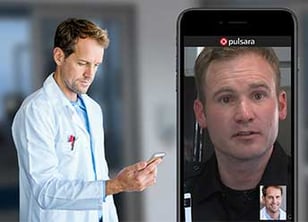
“In EMS, the question was, ‘Why would we need to speak to the physician, expert, medical director or whoever is at the hospital for a ‘Mother, may I?’” Kaull said.
This kind of mentality toward telehealth misses the point, he adds.
“If you look at other positions, instead of looking at EMS, any time there’s a situation that isn’t black and white, they reach out to get that extra piece of advice from others,” he said.
In Austin, Texas, Austin-Travis County EMS uses Pulsara to improve communication and keep crews safe while responding to the COVID-19 pandemic. As part of their new protocol, any time someone calls 911, a dispatcher asks the caller additional questions like:
If the caller answers “yes” to any or all of these questions, an ambulance with extra PPE and testing materials is sent to the caller’s location.
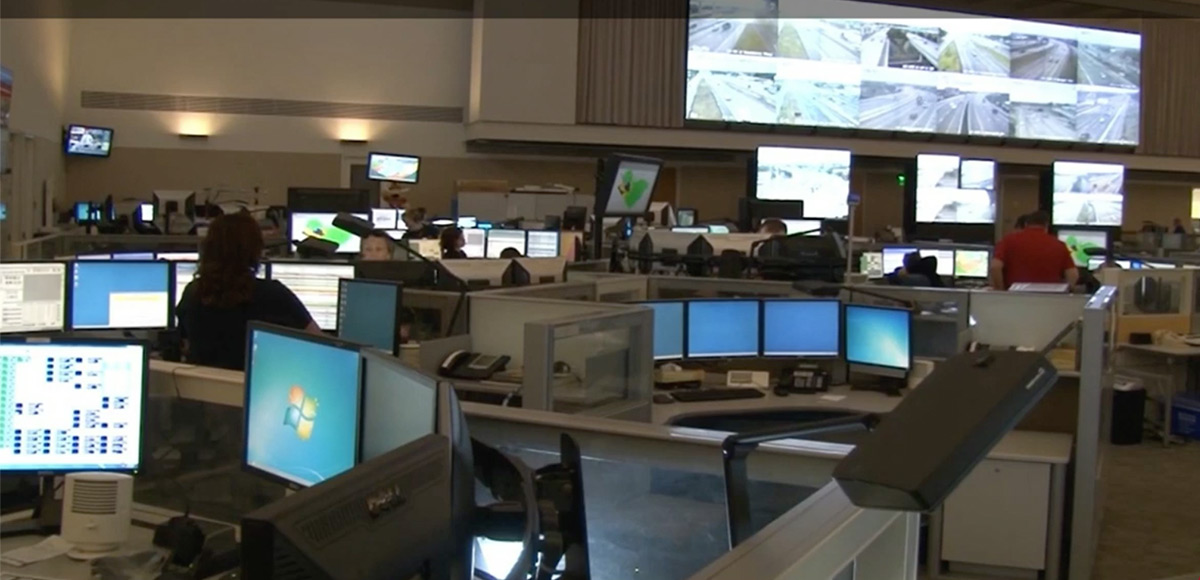
“When a crew gets there, it’s one thing if they’re a critical patient – that’s business as usual – but if they’re not, then EMS can actually do video conferencing with the medical director in their emergency operations center and walk through the case,” Kaull said.
This can lead to one of three outcomes:
The third scenario, Kaull says, would mean bringing the patient to the ER, but ensuring that the hospital is given a heads-up about the patient and their initial assessment.
“It can just be, ‘Here’s the patient, their name, their photo, that they could be potential COVID-positive,’ so the hospital can get them pre-registered, get a room available and then take any precautions,” he said.
In rural areas, providers typically have fewer resources and less exposure to critical patients.
“The amount of times that I see a heart attack patient in a rural area versus how many times I see a heart attack in an urban area is lower,” Kaull said, “but the amount of time I’m with that patient could be 30 minutes to five hours.”
Telehealth applications, Kaull says, level the playing field for rural EMS providers:
“They’ll have additional resources at their fingertips as they’re working on a call.”
COVID-19 has placed an increased demand on healthcare and EMS providers to remotely assess and treat patients, but this isn’t a negative change. On the contrary, use of telehealth applications has kept exposures between patients and providers to a minimum.
“You don’t want that patient to come in and see a doctor unnecessarily,” Kaull said. “There is this efficiency, opportunity and technology. And then there’s this scope of practice and the need by medics to be thinking outside of, ‘I can fix it. It’s a bleed; I’ll stop a bleed,’ or, ‘They’re not breathing; I can breathe for them.’ It’s more about expanding clinics and medicine.”
When time is especially critical, telehealth applications can shave precious seconds off the clock. For example, Kaull reflects on a past patient he transported to the hospital after a car crash:
“They looked fine, but then I showed the hospital pictures of the vehicle, and then all of a sudden they’re like, ‘No, we need to do a belly scan and a head scan.”
After sharing the photo, it changed the way the hospital thought about the patient.
“This person had stable vital signs and didn’t lose consciousness,” Kaull said, “but there is a potential when you see the amount of force and power of the car crash. There’s something I may be missing.”
Additionally, Kaull also looked back on a Pulsara case in Vancouver, Washington. The patient was having a heart attack, and EMS shared the ECG. A physician, who received a STEMI-alert from the Pulsara app, as well as the ECG from the EMS crew, sent a note to “get to the hospital now.”
“When you’re bringing the physicians, nurses or critical care team out there with you, then they have that sudden heightened sense of urgency as well, because they get to see what you’re seeing,” he said.
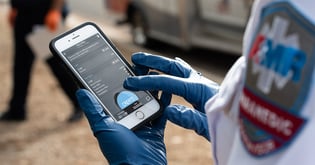 If you have internet, you can access your network with a phone, tablet or computer. The connection is smooth, secure and HIPAA-compliant.
If you have internet, you can access your network with a phone, tablet or computer. The connection is smooth, secure and HIPAA-compliant.
“The hardware itself really is whatever everybody already has in their office or in their back pocket,” Kaull said.
Although telehealth can work on most any hardware, you need to find the applications that best meet your agency’s needs and goals. For example, Pulsara allows communication outside of just one organization.
“There are a lot of other companies that might do HIPAA-compliant messaging and texting securely for their patient, and they do it well,” Kaull said. “However, they only do it within their hospital system.”
Pulsara, he says, crosses organizations and can be done simply and quickly, and as a case evolves, the app allows you to add people to the conversation.
“It’s intuitive and available, with the ability to use whatever hardware you have with these smartphones connected to cell service or WiFi, and then a platform that allows you to connect securely,” Kaull said. “And you can communicate how you want, whether that’s texting, images, video, alerts or messaging.”
Pulsara, which is encrypted at both ends, is HIPAA-compliant. For example, EMS personnel who respond to a car crash may take photos of the scene and the injuries using the Pulsara app, then send those images to the hospital with the patient alert requesting the trauma team.
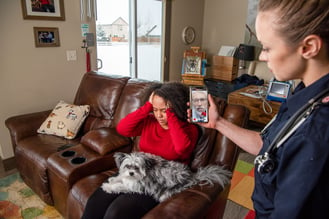
The hospital then alerts all the caregivers within the hospital that are part of that trauma team on their smart devices. However, the data and photos are never stored on a user’s personal device. Everything is stored within Pulsara, making the platform completely compliant with privacy regulations.
“It was all done within a HIPAA-compliant, securely encrypted app,” said Kaull.
The Coronavirus Aid, Relief and Economic Security (CARES) Act, which was passed by Congress and signed into law on March 27, 2020, included a $200 million COVID-19 Telehealth Program. Providers receiving those funds can use them to purchase technology, such as:
In late December 2020, Congress passed a new stimulus package with $250 million allocated for telehealth in a similar program for 2021. Check EMS1.com for the latest updates on these programs and to learn about funding determination, eligibility and approval.
About the Author
Sarah Calams previously served as associate editor of EMS1 and Lexipol. In addition to her regular editing duties, Sarah delved deep into the people and issues that make up the EMS industry to bring insights and lessons learned to EMS providers everywhere. Sarah graduated with a bachelor's degree in news/editorial journalism at the University of North Texas in Denton, Texas.
To learn about how EMS leaders are using cutting edge technology to help treat patients in place during the COVID-19 pandemic, check out 911-Initiated Telemedicine: How Clinical Leaders are Using Mobile Tech.

Although they have the advantage of prior awareness and preparation, large-scale planned events pose unique challenges for emergency management...

For Those Who Love a Good "Oopsie!" At Pulsara, we pride ourselves on enabling secure, HIPAA-compliant communication for healthcare teams. But let’s...

March Recap A New Integration: Improving Data Management, Streamlining Workflows, and Improving Care CoordinationOnly a few days ago, we announced...